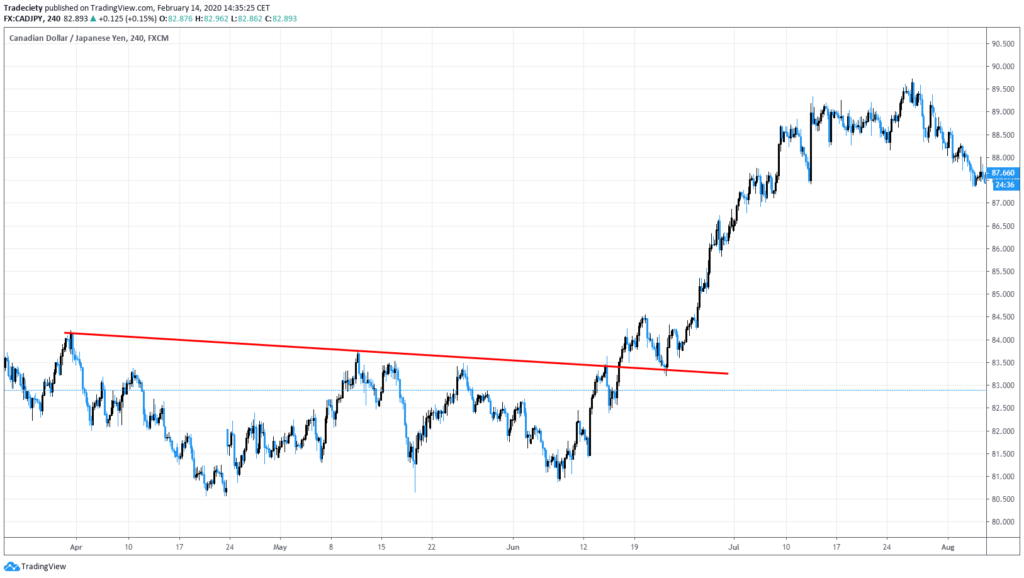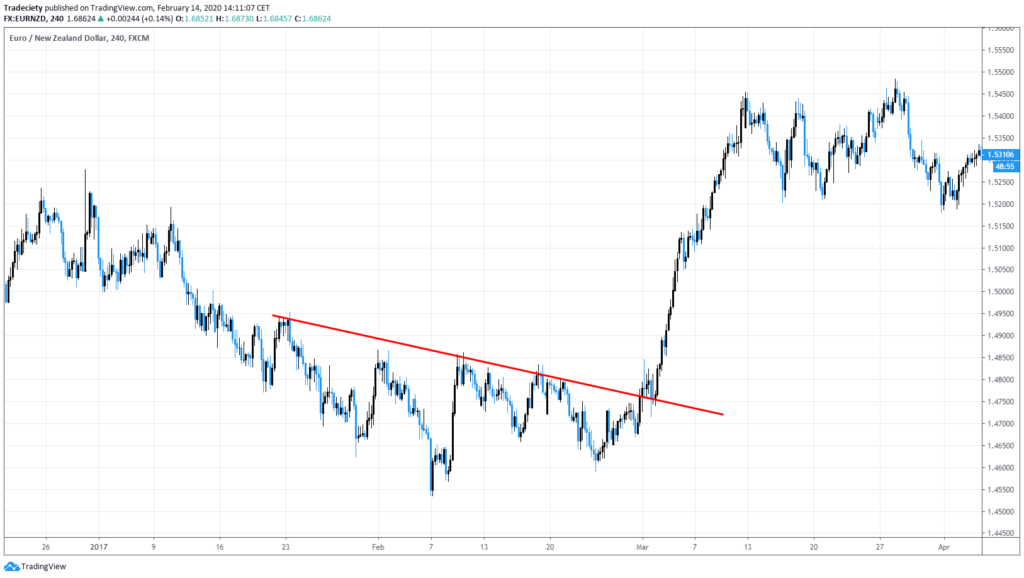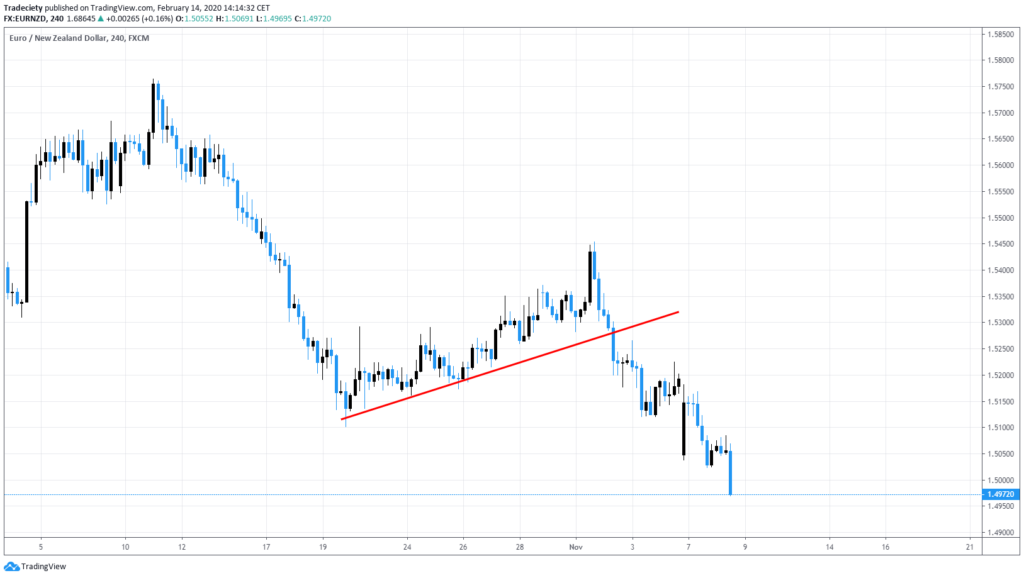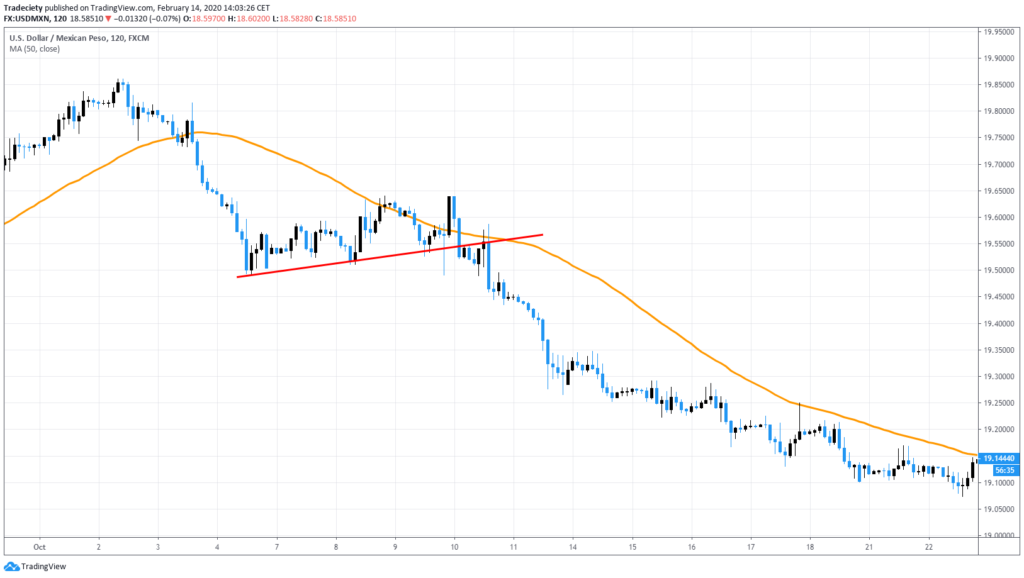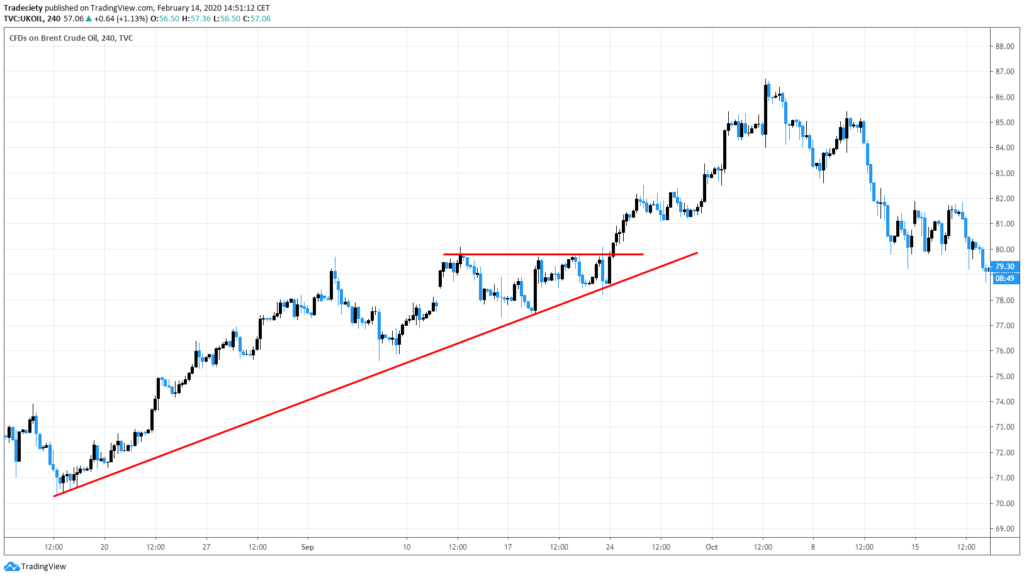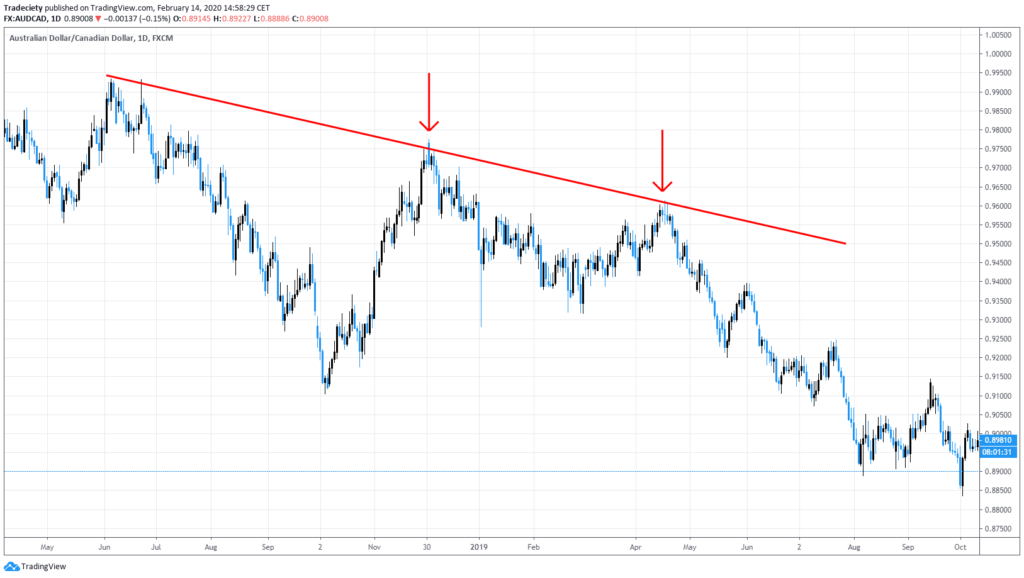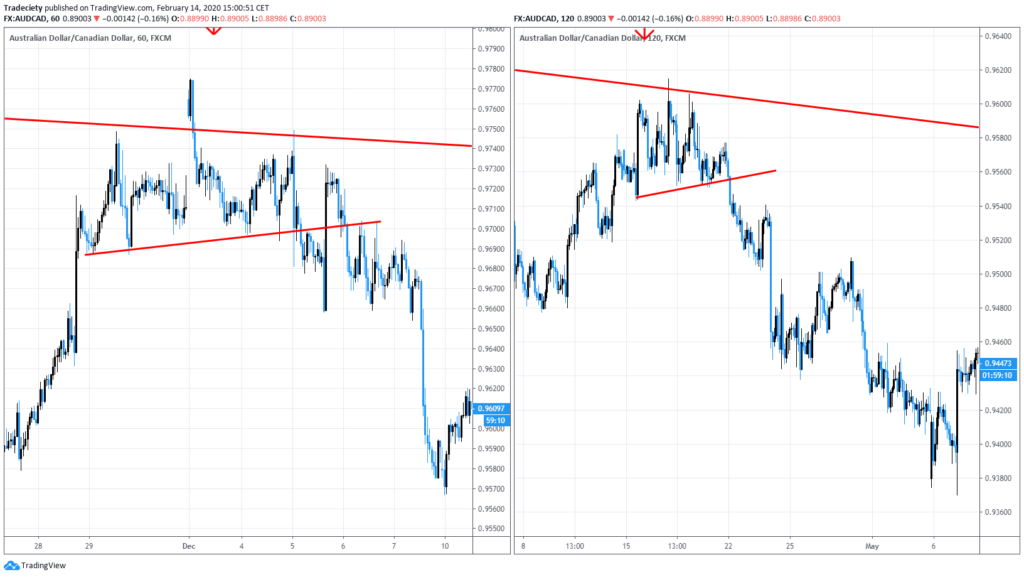Trendlines can be a great trading tool when used correctly. In this post, we share three powerful trendline strategies.
But first, keep in mind two most important concepts when it comes to drawing and using trendlines.
- There are three touchpoints on the confirmed trendline
You can always connect two random points to a chart, but only if there is a third point it handles validated active trendlines. - Do not cut the body
It’s okay to cut the candlestick core when drawing trending lines, but it won’t get through your body!
#1 Break and retest
Break and retest strategies are very common strategies used by many different traders.
The idea is that once you’ve identified an active trend line, you wait for the price to occur. Sometimes prices run away and you won’t look back. However, if the price is traded on a trendline, retests are often traded as a high probability setup. Timing can be performed directly in the lower time frame or in the same time frame that you identified the trend line.
Trendlines act as both entry triggers and also help to stop. Stop losses are usually located on the opposite side of the trend line, and the trend line serves as a level of protection between entry price and stop loss.
The more touchpoints on the trendline, the better it is to break and retest strategies. In the example below, the trendline has at least 3/4 of the valid touchpoints. During the breakout, there was a lot of volatility in the market, and prices have floated around trendlines for quite some time.
The level of trader’s aggression determines how quickly an entry is taken. Active and more risky traders can enter trading as soon as prices touch the trend line. More conservative traders will wait for prices to be pulled away from the trend line and show signs of momentum in the trade direction.
It’s not right or wrong. The timing of your entry depends on the trader’s preferences.
#2 Trend Line Flag
The Break & Retest scenario can be considered as a reverse trade or an early trend formation, but the flags are categorized as regular or slow trends.
Flag trading looks for established trends and waits for integration/pullback. If you can explain pullbacks on trendlines, it may be possible to trade such a flag once the price breaks the trendline and resumes trading in the direction of the trend.
In the screenshot below, prices were first made in downtrends before the trend paused and establishing the flag defined by the trendline. Here you can gain additional insight into market participants. The initial downtrend was strong, with prices falling rapidly in a short period of time, but the bullish flag pattern only showed weak profits from buying. Comparing trend strengths can help you understand how likely it is to cut trend lines. In this example, the downtrend was significantly stronger than the bullish flag pattern, making it more likely that the trend will be lower.
You can also add a long-term moving average to your chart when it comes to flag trading. 50 MA helps to identify long-term trends, such traders only look for flag patterns that indicate continuity in the direction of the trend.
In the screenshot below, the moving average shows a downtrend, as prices were below the moving average. The flag pattern indicates a temporary pause, and a break in the trendline confirmed the continuation of the trend.
#3 Trend Line Bounce
Trend line bounce is also a trendy trading approach. In contrast to the flag pattern, trendlines are not used for the time of trade entries, but are used to identify scenarios in which the trendline acts as a support or resistance.
In the screenshot below, the price bounced back from the trend line for three consecutive times, confirming the effectiveness of the trend line. The trader then looks for time trade entries, looking for other technical patterns around the bounce. In this case, the price established a horizontal resistance level around the torrens bounce. Later, at the horizontal level, you can reserve time for post-breakout trading.
With this strategy, traders are extra conservative and can either put down a stop loss much more than the trendline or use stop losses below the resistance level.
Again, it’s not right or wrong either. It all depends on the trader’s risk appetite. I have written about stop-rotechnology before.
Trendline bounce is also used in a multi-timeframe approach, allowing traders to use other technical concepts to move trades to lower timeframes, as in the screenshot below.
Below we will look at the situation for the lower time frame for the two trend line bounce scenarios marked with the red arrows.
On the left you will see the first bounce (first arrow). Price action was pretty troublesome here, so perhaps no trade entries were made here.
On the right side, the price provided head and shoulder structures, and with the help of another short-term trend line, traders were able to timing their trades.
A multi-time frame approach can help some traders join the trade faster and also help you find higher reward risk ratio scenarios. However, if a preferred candlestick pattern is present, trend line bounces can also be exchanged directly on a higher time frame.
Trendline is a great tool in the toolbox, as traders and some people feel it is more reliable than regular horizontal support/resistance.




